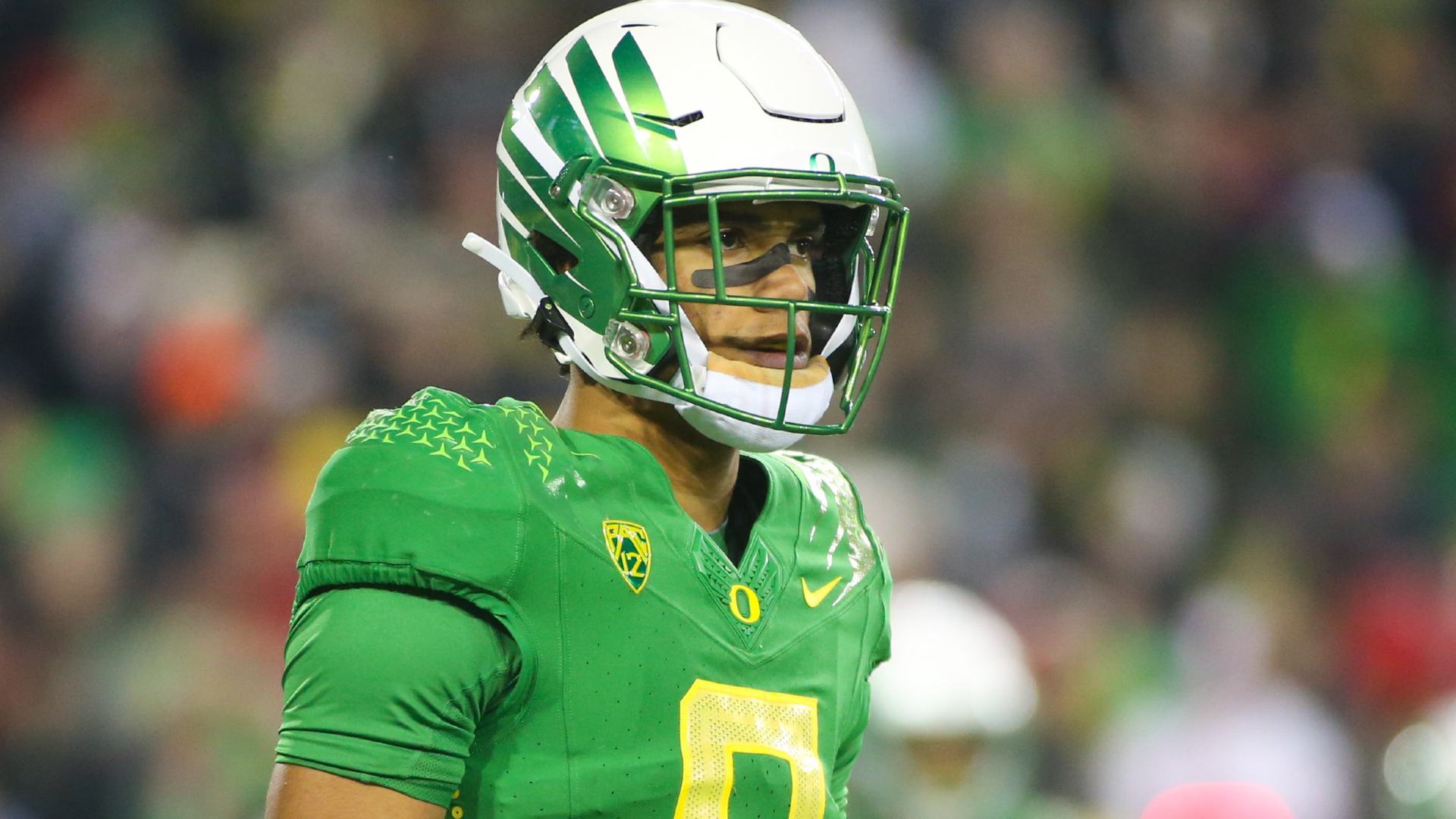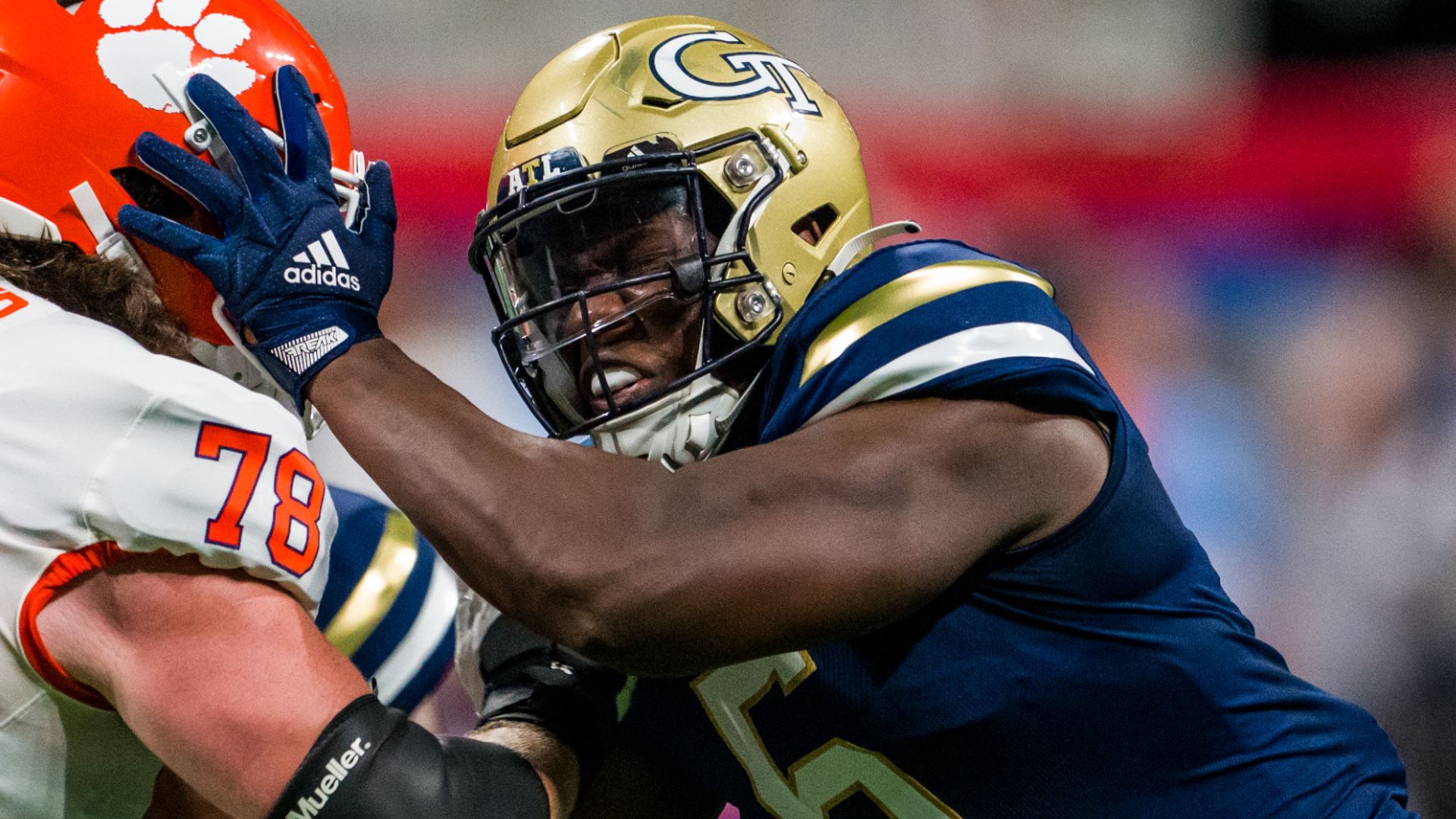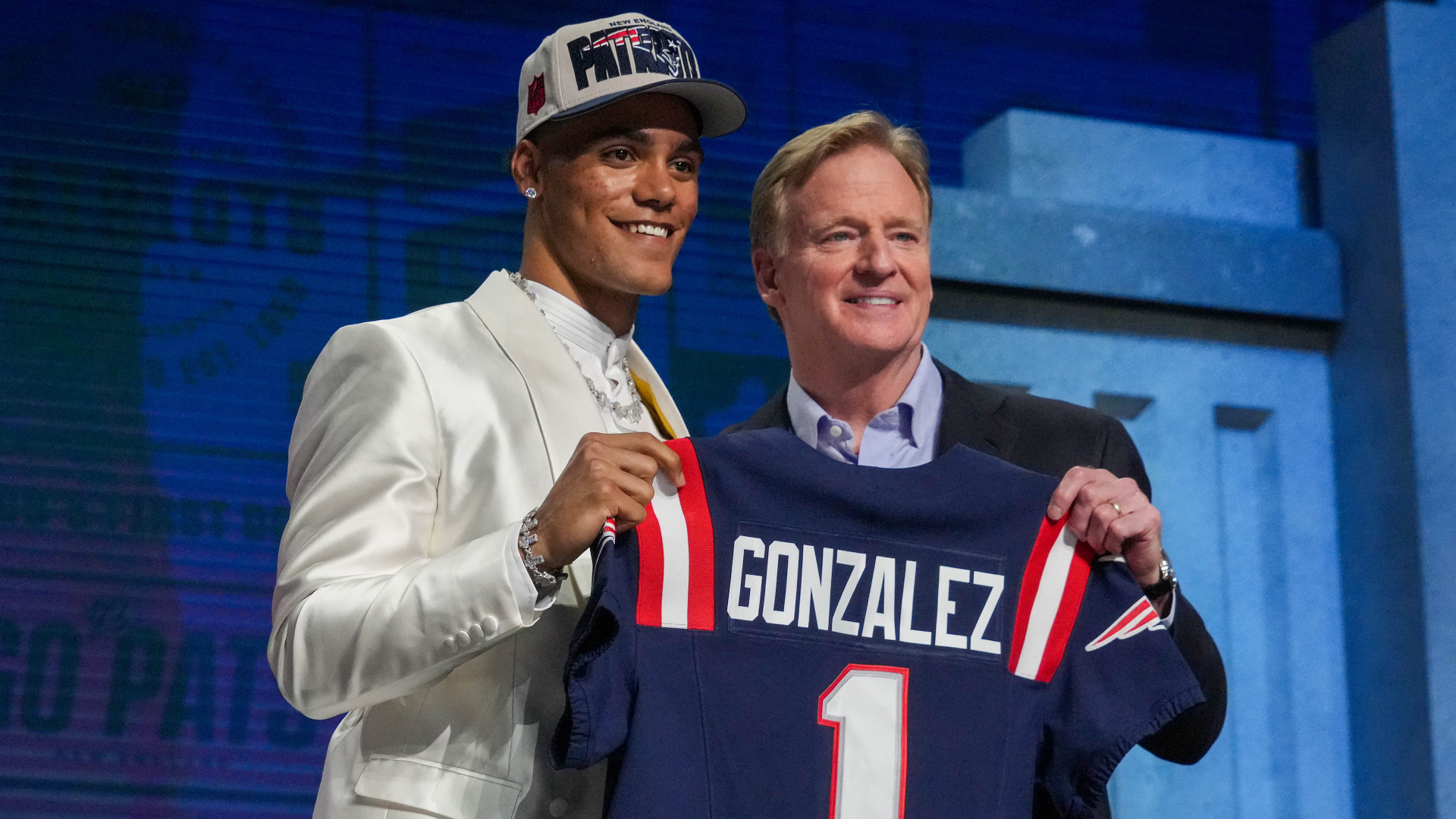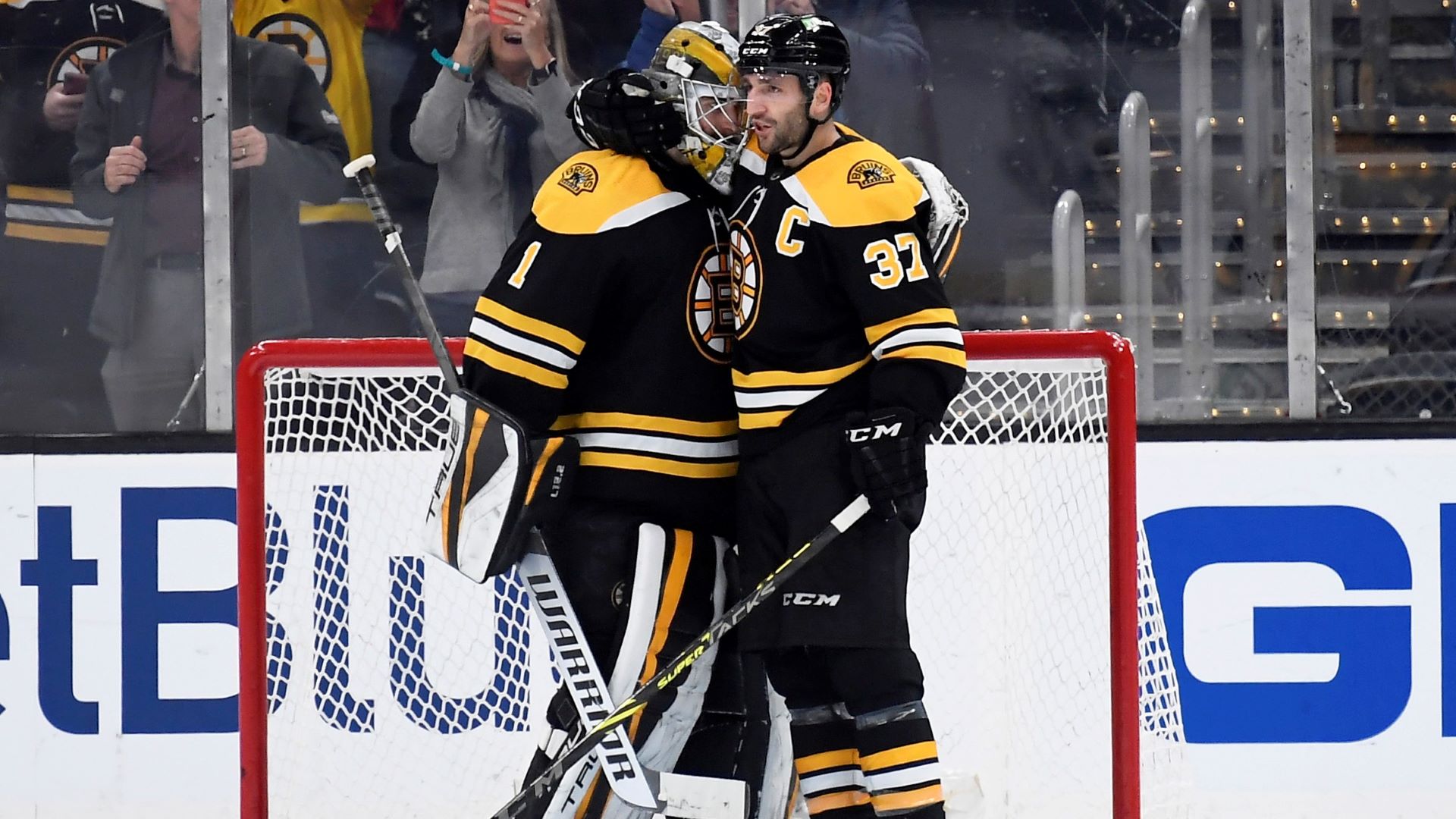By the time the 2023 NFL Draft wrapped up Saturday evening, the Patriots had compiled their largest draft haul in over a decade.
New England selected a total of 12 players, its highest number since 2010. Bill Belichick and his draft-room lieutenants prioritized defense on Days 1 and 2, then used the third and final day to beef up the middle of their O-line, revamp their special teams and take late-round fliers on a couple of talented wideouts. Two notable positions of need, however, remained unaddressed.
Here are seven takeaways from the moves the Patriots did and didn't make in this year's NFL draft:
1. Unlike last year, when the Patriots stunned everyone by taking guard Cole Strange 29th overall, there were very few complaints about New England's first-round pick. Cornerback Christian Gonzalez was widely viewed as a top-two cornerback in this draft (some analysts actually had him ranked ahead of Illinois' Devon Witherspoon) and a clear-cut top-10 prospect, and the Patriots were able to land him all the way down at No. 17 -- after trading down three spots.
Gonzalez is exactly what the Patriots' secondary needed: a tall (6-foot-1, 197 pounds), long, athletic cover man to join their collection of talented but undersized cornerbacks. Obviously, no draft pick is guaranteed to pan out, but the Oregon product looks like a home-run selection and should be a Day 1 starter at outside corner.
2. Just as they did in 2022, the Patriots placed an obvious premium on speed and athleticism in this draft. Gonzalez and fellow cornerbacks Ameer Speed (sixth round) and Isaiah Bolden (seventh) all ran the 40-yard dash in the 4.3s, and sixth-round receiver Demario Douglas ran a 4.44. Even Sidy Sow, one of the two offensive linemen New England selected in Round 4, ran a 40 that ranked in the 90th percentile for guards, per Mockdraftable.
Four of the Patriots' 12 draft picks posted Relative Athletic Scores (an all-encompassing metric that combines a player's height, weight and testing numbers into one value and ranks it against his position group) of 9.4 or better out of 10. Their first- and second-round picks (Gonzalez and Keion White) had near-perfect marks of 9.95 and 9.92, respectively, though White was classified as a defensive tackle, not an edge rusher. Speed's RAS wasn't far behind that group at 8.86.
Of the six remaining draftees, two were specialists (kicker Chad Ryland and punter Bryce Baringer) and two didn't test before the draft due to injury (linebacker/safety Marte Mapu and guard Atonio Mafi). The only Patriots pick with a below-average RAS was receiver Kayshon Boutte, a once-vaunted prospect who fell to the sixth round after a dreadful 2022 season and rough combine performance, which he said was influenced by an ankle injury.
"It seems to be my most well-used quote: if you want speed, draft fast guys," Patriots director of player personnel Matt Groh said in his post-draft video conference, referencing his explanation for drafting burners like Tyquan Thornton and Pierre Strong a year ago. "... But you want fast guys? You better draft them. So with Isaiah, with Ameer, a bunch of these guys, even the guys we took in the earlier rounds, our strength staff does a great job and is going to try and get everything out of these guys.
"But you've got to have just naturally fast guys, and that's what a lot of these players are. We are always looking to upgrade our team across the board with all their skill sets. But the league is only getting faster and faster. We don't want to just try and keep up; we want to push the pace here."
3. The Patriots seemed to value pre-draft contact more this year than in previous drafts. Six of their top seven picks took top-30 visits to New England before the draft, an unusually high percentage. Bolden did, as well. Douglas didn't, but he played for the Patriots' coaching staff at the East-West Shrine Bowl, as did Mafi (who later took a visit).
A notable outlier was White, who did not have a single meeting, workout, visit or conversation with the Patriots during the pre-draft process. The second-round D-end believes he'll be a great fit in Foxboro, though.
"I'm a very big business person," White said. "I'm not too big on the glitz and glamor of football. I want to work, and I want to win, and I feel like that's what the Patriots offer."
4. Another emphasis: special teams.
The Patriots were the first team since the 2000 Oakland Raiders to take a kicker and a punter in the same draft, and their final two picks (Speed and Bolden) profile as assets in kick coverage and kick returning, respectively. Douglas also was a productive punt returner at Liberty, but no one's likely to unseat first-team All-Pro Marcus Jones from that spot.
Ryland was the highest-drafted Patriots specialist of the Bill Belichick era (fourth round, 112th overall), coming off the board six spots higher than Stephen Gostkowski did in 2006. New England traded up to select him, too. Given that investment, it would be surprising and disappointing if Ryland was not on the Patriots' Week 1 roster.
That's bad news for veteran kicker Nick Folk, who beat out younger challengers in each of the last three training camps but saw his effectiveness and range dip last season. Folk's inability to consistently force touchbacks on kickoffs also burned the Patriots after Jake Bailey's move to injured reserve. New England allowed a league-high three kick-return touchdowns in 2022, and all three came on Folk kickoffs that did not reach the end zone.
Baringer, a sixth-round pick and Ryland's teammate at the Senior Bowl, won't be guaranteed a roster spot, but he was the consensus No. 1 punter in this draft and should have a good chance of beating out veteran newcomer Corliss Waitman this summer. They'll be competing to replace Bailey, who was cut in March and now is with Miami.
It's clear the Patriots, who sent four special teams coaches to the NFL Scouting Combine, knew changes were necessary after ranking dead last in Football Outsiders' special teams DVOA last season.
5. One of the most notable developments of this draft was the Patriots' choice not to select any players at two perceived positions of need: offensive tackle and tight end.
All three O-linemen New England chose are interior players: big, mauling guards in Sow and Mafi, and fourth-rounder Jake Andrews, who profiles as a center first, guard second. The Patriots did need more depth at those three interior spots -- James Ferentz was the top backup for all three last season -- but tackle was viewed as the higher priority, since projected starters Trent Brown and Riley Reiff both are entering contract years and have lengthy injury histories.
Groh, though, indicated the Patriots are satisfied with the tackle group they assembled in free agency, when they also signed Calvin Anderson and re-signed Conor McDermott to join Brown, Yodny Cajuste and redshirted 2022 seventh-rounder Andrew Stueber.
"We signed three guys in free agency at the position," Groh said. "We re-signed Conor ... signed Calvin Anderson and then with Riley. So, we've got a lot of bodies there right now. I wouldn't really want to take any (away) of the guys that we got. You know, do I want to take Christian Gonzalez off this team and add a tackle? Those are the decisions you've got to make. We could have drafted a tackle in the first round, and I'm sure the question would be: Well, did you address corner?"
The Patriots had a chance to grab the last of the top-tier tackle prospects (Georgia's Broderick Jones) at No. 14 overall, but they traded back, allowed Pittsburgh to take him, and selected Gonzalez three picks later. The top Day 2 tackle, Syracuse's Matthew Bergeron, went eight spots before the Patriots took White at No. 46. Tyler Steen, who played under Bill O'Brien and looked like a Patriots fit, went 11 spots before New England's third-round pick, which they used on Mapu. A couple of intriguing tackle projects, Old Dominion's Nick Salvideri and BYU's Blake Freeland, came off the board just before Andrews in early Round 4.
It's unclear whether the Patriots were targeting any of those players, but they didn't make any aggressive moves to land them. The trade-up for Ryland was one only one New England executed in this draft, breaking a streak of five consecutive drafts with at least one move up the board in Round 2.
It will be interesting to see how the Patriots deploy their three rookie linemen this spring and summer. Andrews and Mafi look like interior-only players, but Sow started 11 games at left tackle early in his career at Eastern Michigan, and at 6-foot-5, 323 pounds, he has the requisite size to play there.
"Sidy does have some background at left tackle," Groh said. "He's been a guard here the last couple years. He's not a little guy. He's got plenty of athleticism. He's got plenty of power. So we'll see how it goes and try and find the best spot for him."
One other note: Groh reiterated the Patriots prefer to keep Mike Onwenu at right guard, where he played at a borderline Pro Bowl level last season. The 2020 sixth-round steal is entering the final year of his rookie contract.
6. As for tight end, Groh said there were a few players the Patriots "really liked," but they came off the board too quickly. This was considered the best and deepest tight end draft class in years.
"Those guys went really fast, and they just kept coming off," Groh said. "That was just the way the draft unfolded. There were some guys up top. There was some good depth in the middle of the draft, and those players came off really, really fast."
Iowa's Sam LaPorta and Notre Dame's Michael Mayer both were taken within the first few picks on Day 2, and Oregon State's Luke Musgrave went shortly thereafter, four picks before White. Michigan's Luke Schoonmaker went later in Round 2 (No. 58, higher than expected) and the Patriots passed on South Dakota State's Tucker Kraft and Georgia's Darnell Washington to take Mapu at No. 76.
The Patriots have a solid tight end duo for 2023 in Hunter Henry and free agent pickup Mike Gesicki, but both are on expiring contracts. Gesicki also essentially is a super-sized receiver with minimal in-line blocking ability. The Patriots did add a blocking-focused tight end after the draft, reportedly signing undrafted free agent Johnny Lumpkin out of Louisiana-Lafayette.
7. Beyond Gonzalez, who will be expected to quickly develop into the No. 1 corner New England lacked last season, the most intriguing player in this draft is Boutte.
The No. 2-ranked receiver in the 2020 recruiting class, he showed incredible potential in his first two seasons at LSU and was on pace for a barnburner of a sophomore season in 2021 before he broke his ankle. A year ago, he was being projected as a possible 2023 first-round pick.
Boutte's final collegiate season, though, was a full-on disaster. He clashed with new Tigers head coach Brian Kelly, saw his productivity plummet, flopped at the combine and entered the draft with pervasive concerns about his maturity and coachability. Based on his track record, it wouldn't be shocking if the Patriots cut bait with him before his rookie season begins.
But if Boutte can get with New England's demanding program and recapture the form he showed in 2020 (when he capped his freshman campaign with 14 catches for 308 yards and three touchdowns against Ole Miss) and 2021 (when he posted an eye-popping 38-509-9 receiving line in just six games), he has legit star receiver potential. It's a gamble, but one certainly worth taking with the 187th overall pick.
The 5-foot-8, 178-pound Douglas should be fun to watch, too. He said he modeled his game after Marcus Jones, another undersized dynamo, and the Patriots could look to use him in similar ways on offense.
The Patriots' decision not to draft any pass-catchers until late on Day 3 is worth debating, though. Belichick clearly has more confidence in the supporting cast he's assembled around Mac Jones than many fans and media members.








